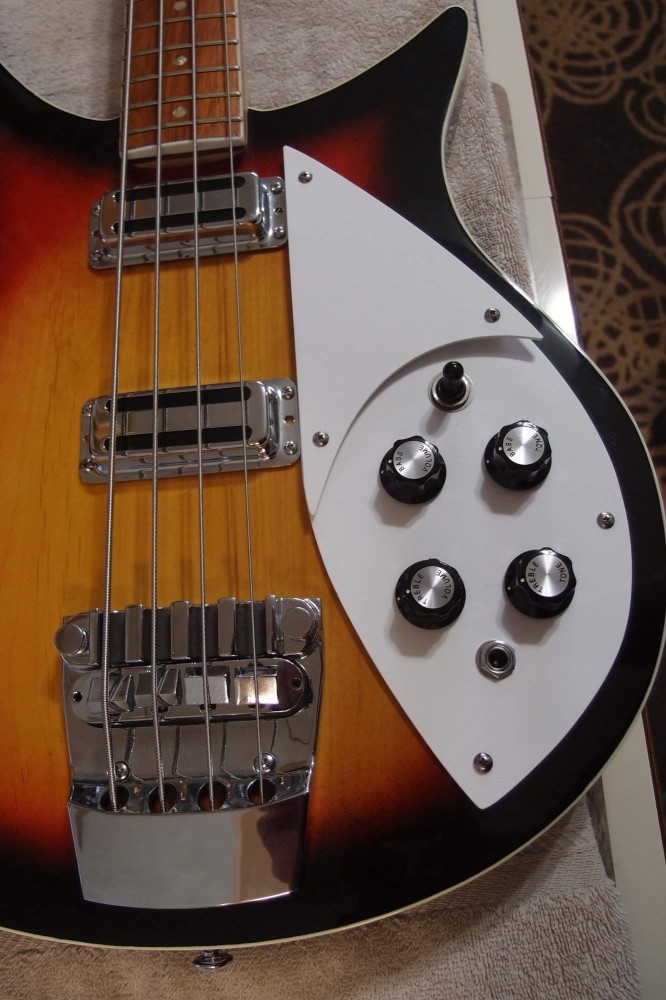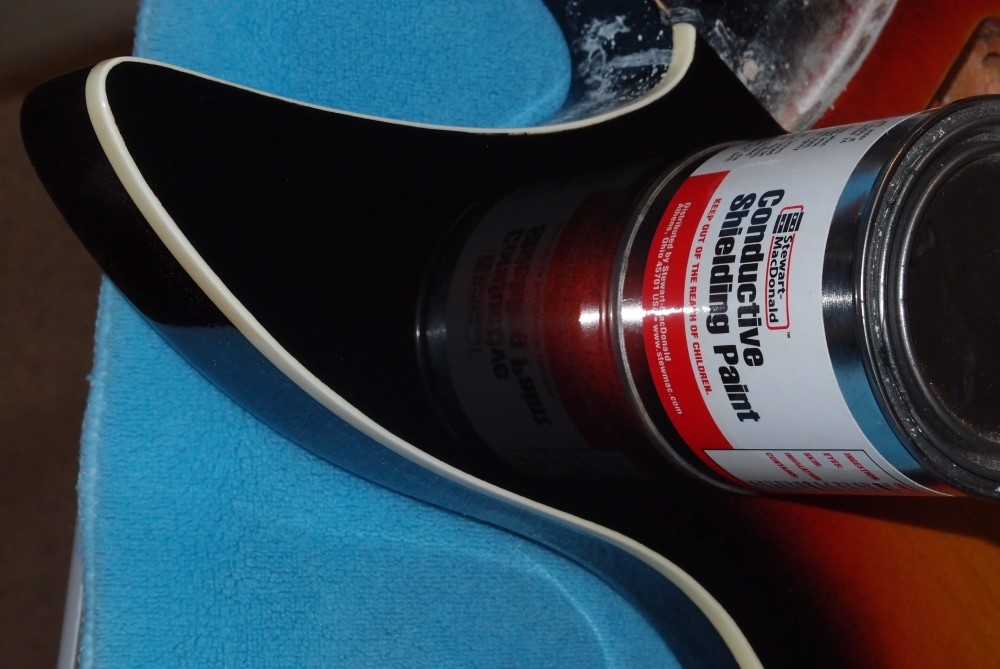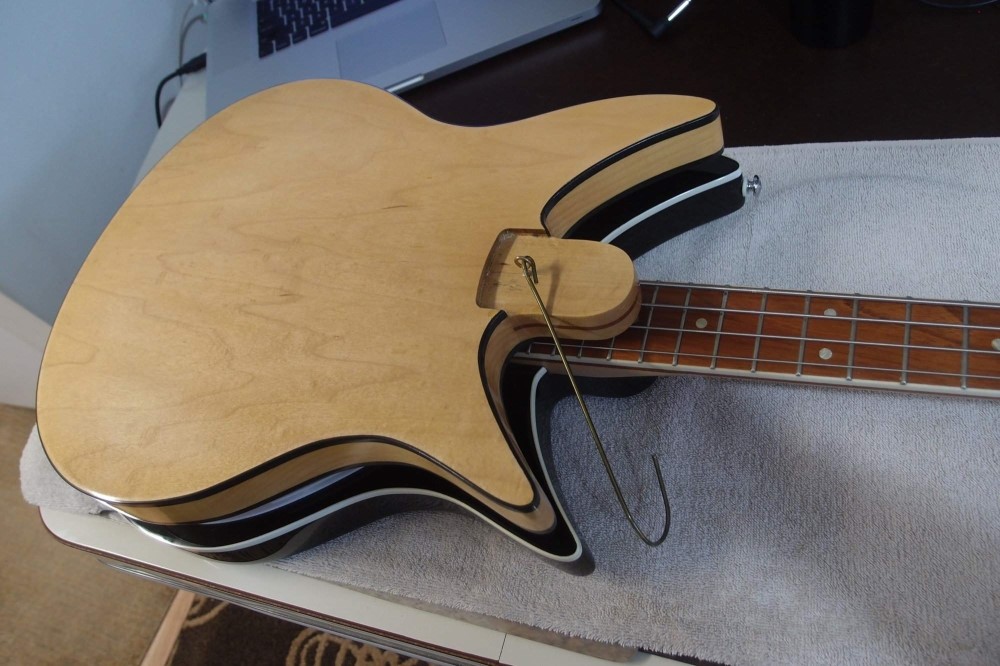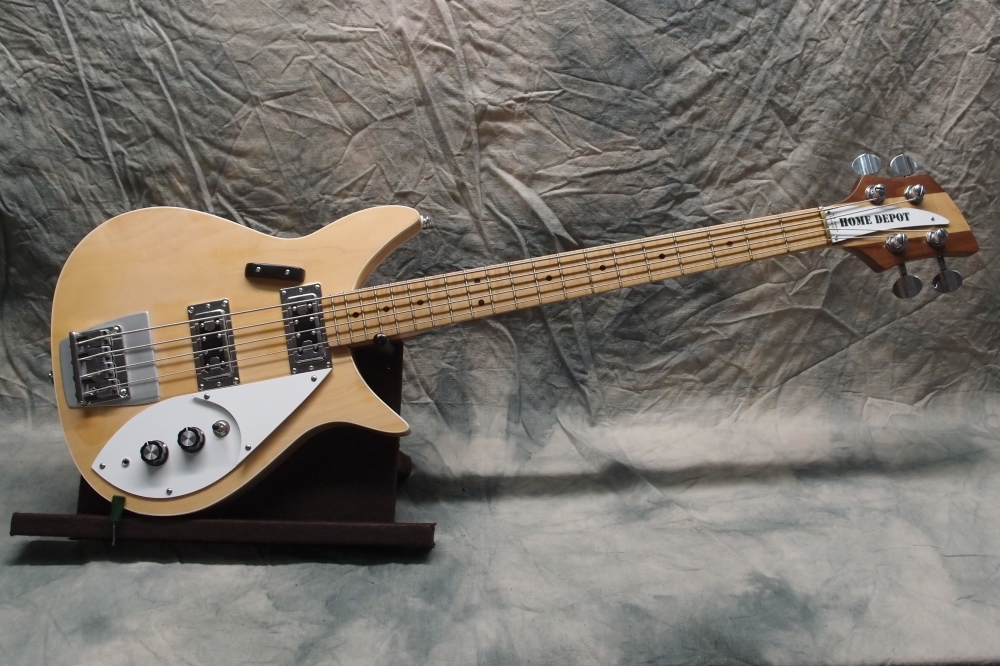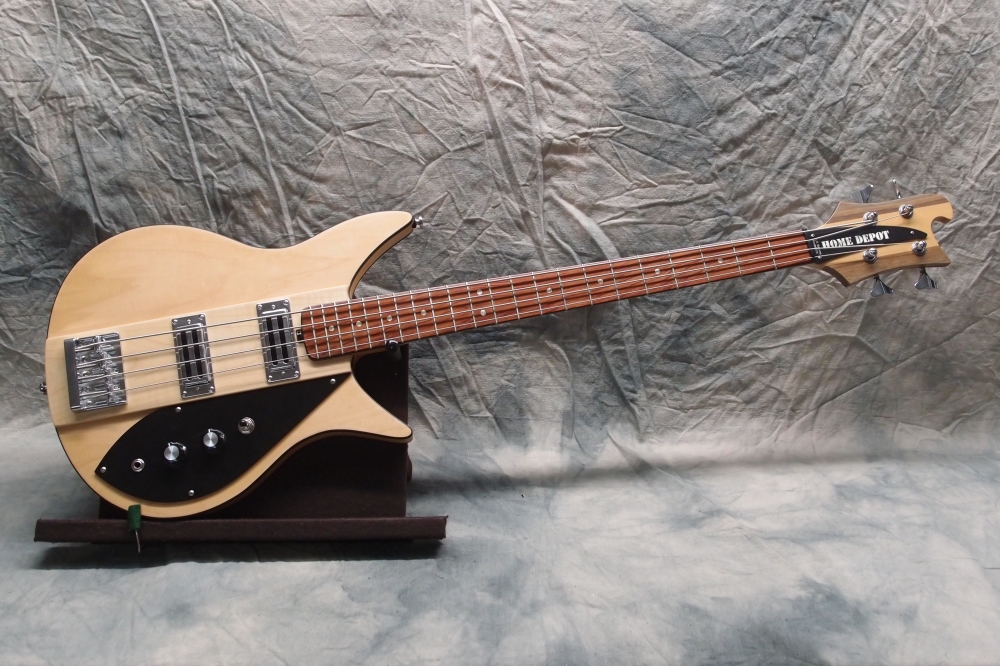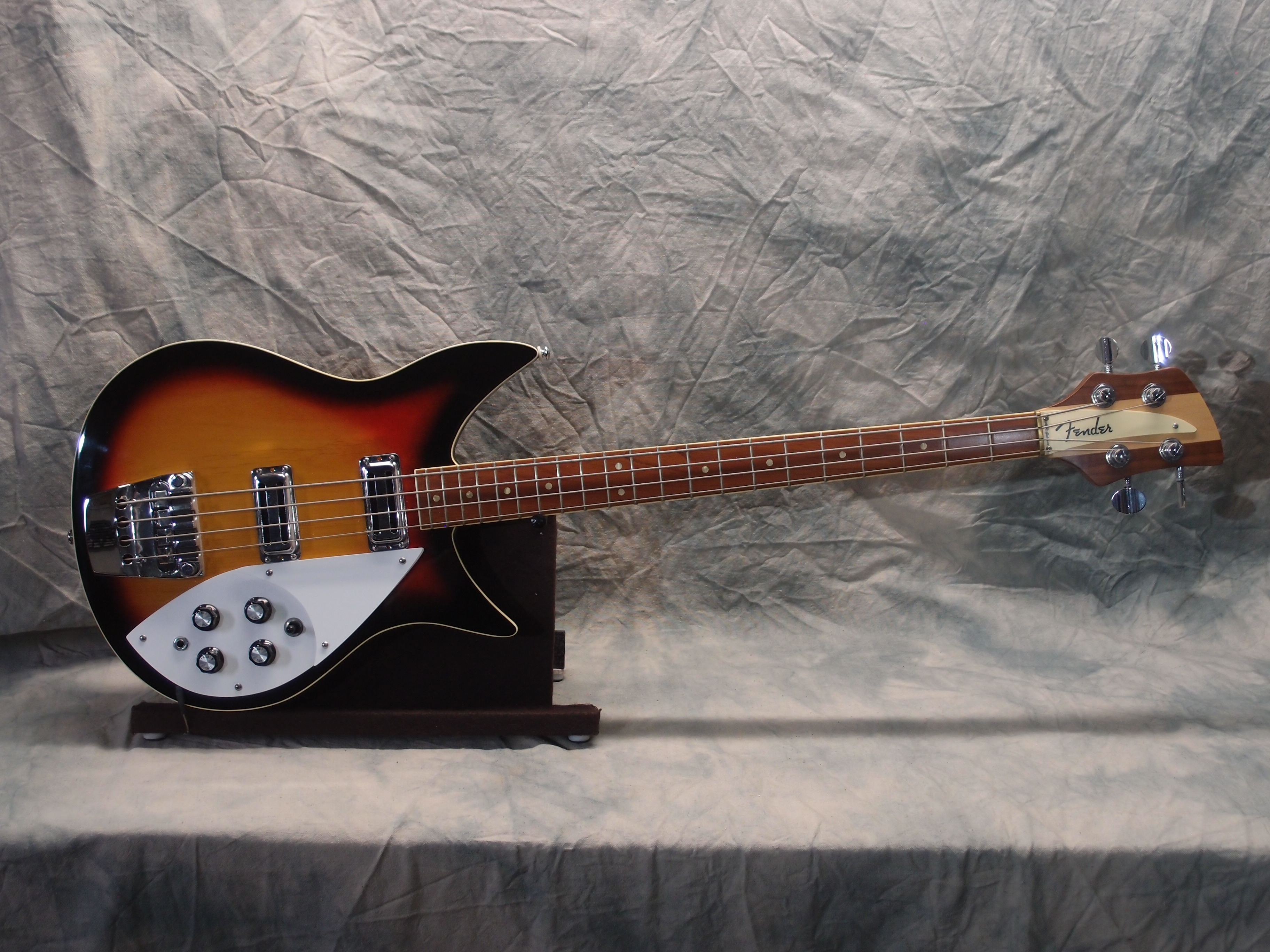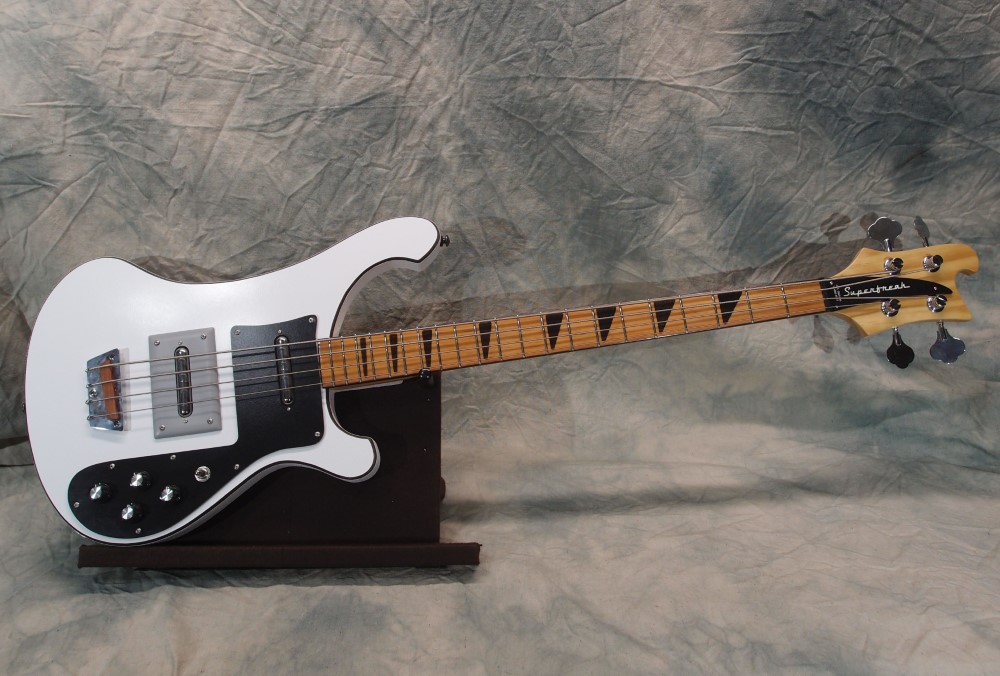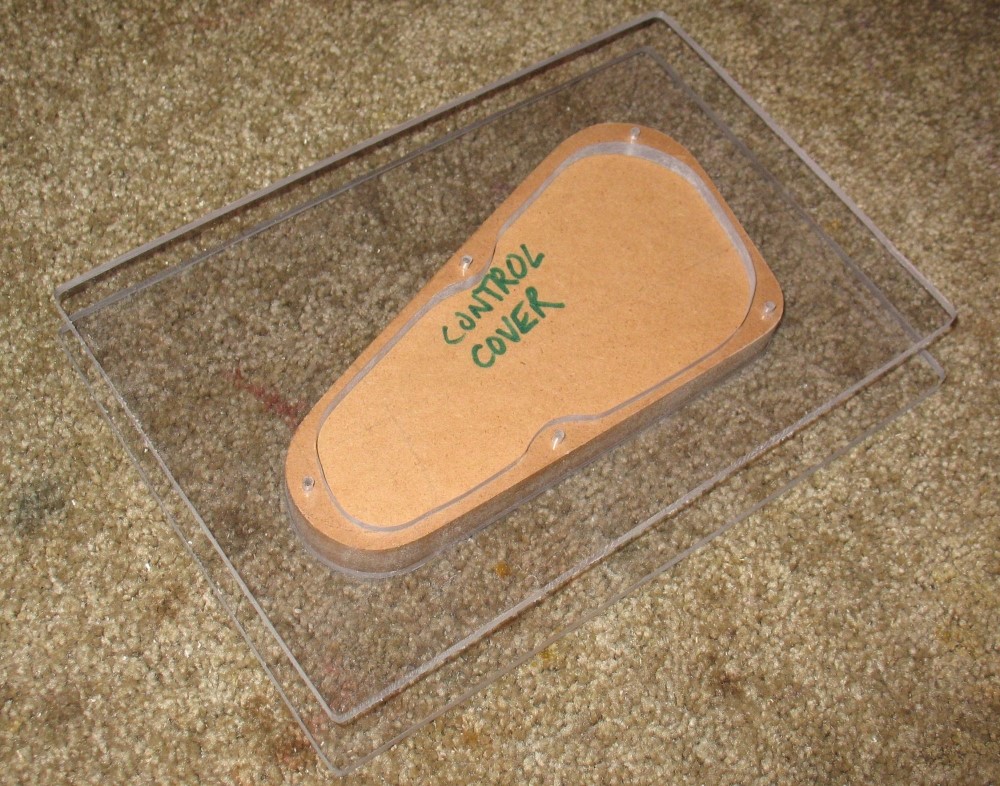Rickenbacker 325 Bass 3 (2/3)
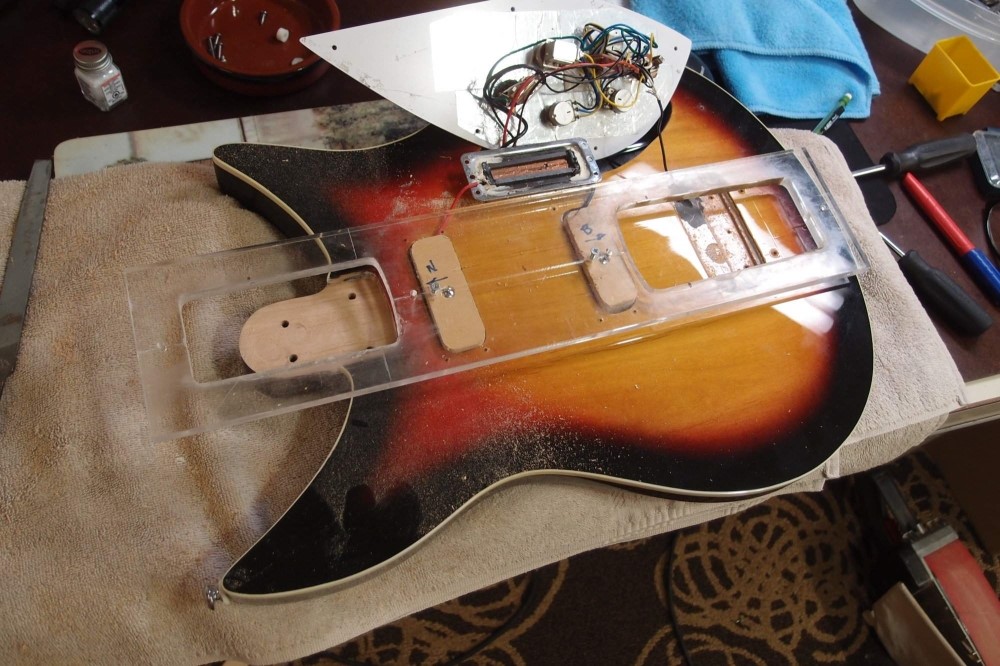
I found the setup on this guitar is still funny. The bridge pickup is actually closer to the strings and louder. That's the opposite of just about everything. After studying it a while, I decided to make the neck heel flat again. I attached a piece of 80-grit to a block of wood and carefully drew the heel across it until I had the profile I wanted, checking frequently with a yardstick until the angle was right. This is inevitably going to leave the heel a bit convex, so I did some final flattening with a scraper. No power tools this time, this is a very small adjustment, and I don't want to over-cut it. While I was at it, I also smoothed off the transition from the round back to the flat heel, so it is no longer Fender-y but very sleek, like a Ric.
I also wanted to lower the neck a tiny bit, but I've already removed material from the heel and don't want to remove any more. That means re-routing the neck pocket. You do not want to tape the template down to the finish, as there is a good chance it will pull it up. Instead, I made two spacers from 1/2" plywood scrap to fit inside the pickup routs, and screwed them down. Then I aligned the template and screwed it to the spacers. Nice and solid, and nothing touching the finish. I took about 1/16" out of the neck pocket; everything was right on the money. The nice thing about doing it this way is that it is repeatable - I can simply reassemble the spacers and template, and cut some more. But I think this will do it, with a slight adjustment to the bridge. The only wiring I had to undo was the bridge ground, which was soldered on. I wanted the bridge and the strings completely out of the picture for this operation.
The cause of all this is the height of the surface-mounted pickups. The Ric bridge has enough height adjustment, but getting it all right took several go-arounds. I hope this is it!
The Chinese tuners I used on this project are barely adequate. But that is an easy upgrade any time, and it keeps the cost of the build down.
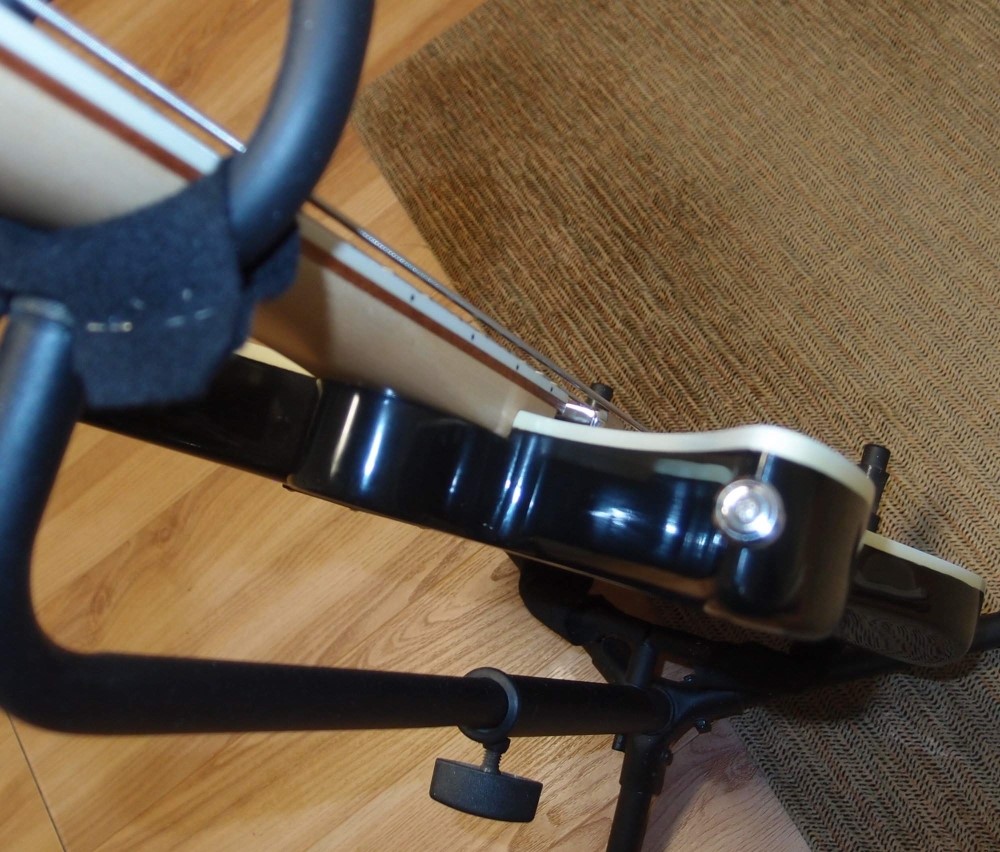
This was a tricky and not entirely necessary operation on a guitar that was already a good player. I did not know if I could pull it off, and I was by no means certain of the outcome - the new geometry might not work at all. But it does. Everything came out perfect, and with the bridge raised up a little higher to compensate for the flatter neck angle, everything lines up. I now have a consistent gap over the pickups and a good action. The new electronics are a huge improvement as well.
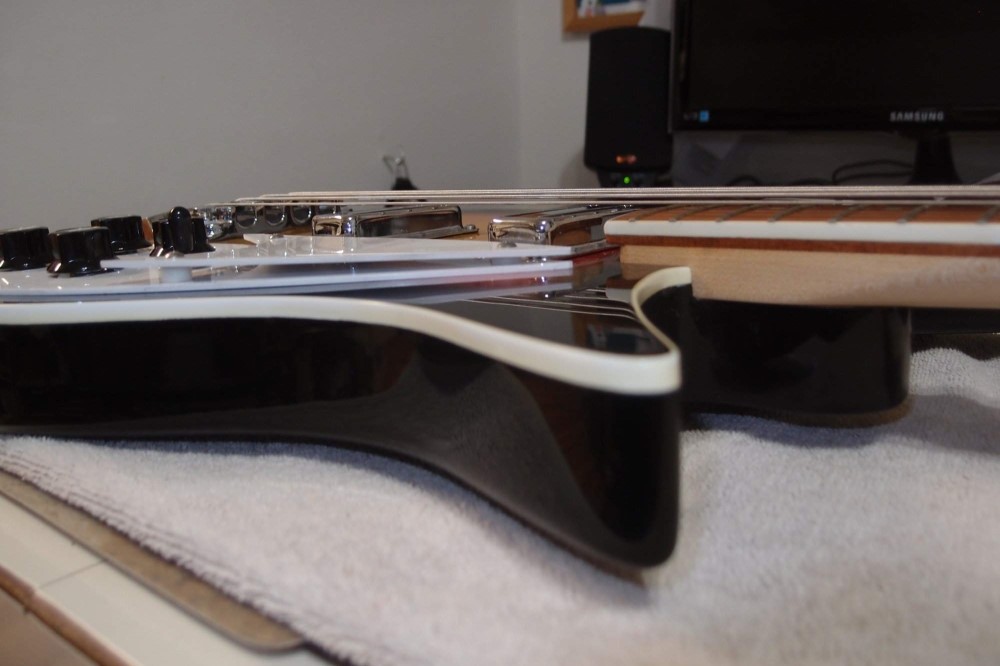
Here is a shot of the business end. The pickups are mounted on tiny O-rings. There is no height adjustment on these pickups, and they are pretty tall, which is why I had so much difficulty getting the neck and bridge aligned over them. This is a real tight corner that I've built myself into. In a factory setting, you could throw away a dozen prototypes, but I want my one prototype to be the finished product - serial number 000001.
I find that for best tone and playability, you want the action to be a bit higher than rock bottom. Low action is overrated, Unless you play very gently, and I don't, you're just going to get a lot of buzzing. You also get much better dynamics with a slightly higher action. I'll say that without actually defining what it means, but trust me, your ax will sound better if you raise the action a tad.
Likewise, pickups sound better with a little more distance from the strings. Not only do you not constantly clobber them as you play, but with lower output, a lot more subtleties come through. And you get better 'dynamics', whatever that means. High-output pickups crammed up against the strings just go into overload and squash all the tone out of your tone.
High output is another marketing point that has become totally obsolete with today's electronics. There was a time when the only way you could overload your primitive tube amp's front end to get that crunch was with high-output pickups. But today amps don't need that, and there are hundreds of pedals you can choose from to get all sorts of effects. The fact is, if you adjust the gain so the volume is equal, low output pickups sound better. See Loudness War - this is a very related subject.
For a good example of excessive volume/compression that you can hear for yourself, compare the old un-remastered Beatles catalog with the new higher-priced 'remastered' versions. Adjust the listening volume so they are equal. You will find that the remasters are actually ruined. This is true of almost all music recorded today - it is ruined by excessive compression ( actually, most of it is ruined long before then. ) I shudder to think what Pink Floyd remasters sound like compared to the original recordings.
A few more parting shots, and I'm on to my next project.
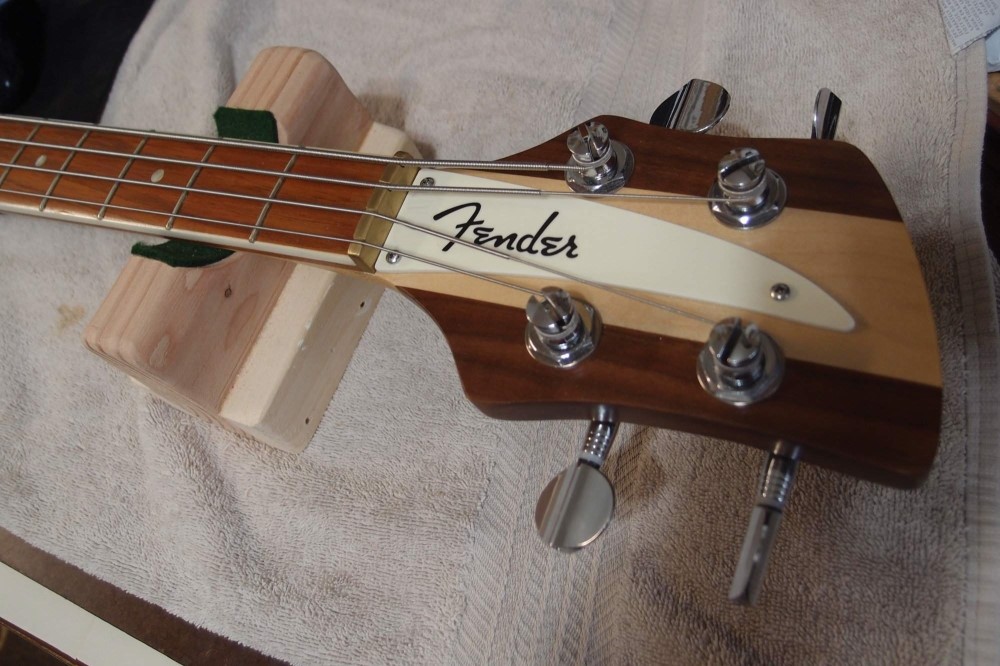
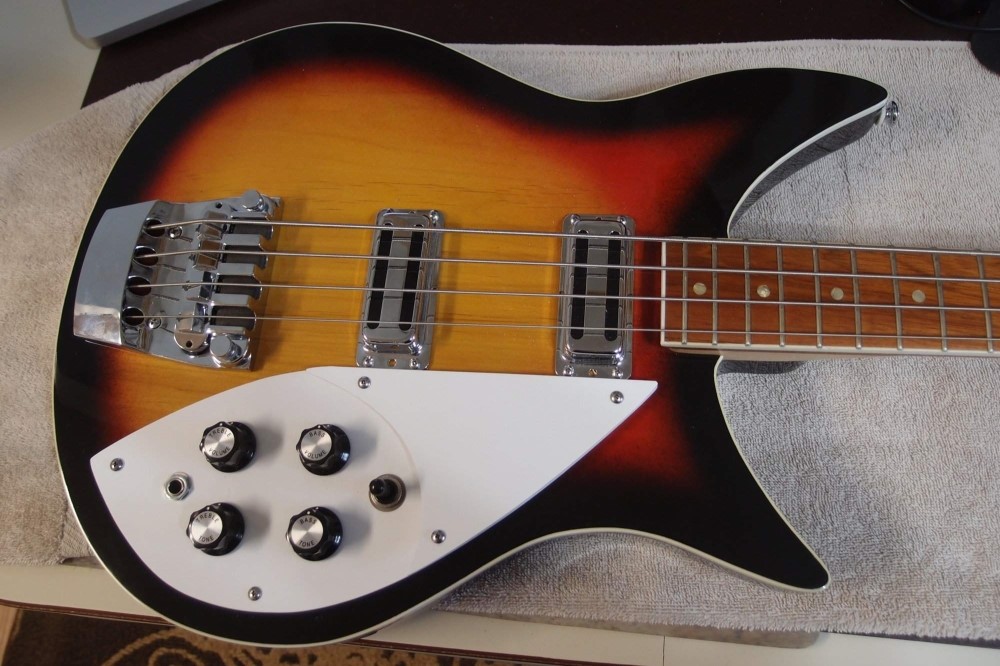
Speaking of Beatles, how cool would it have been if Paul had had one of these to play in Magical Mystery Tour? Goo goo goo joob! Rickenbacker really missed the boat, not doing this themselves.
